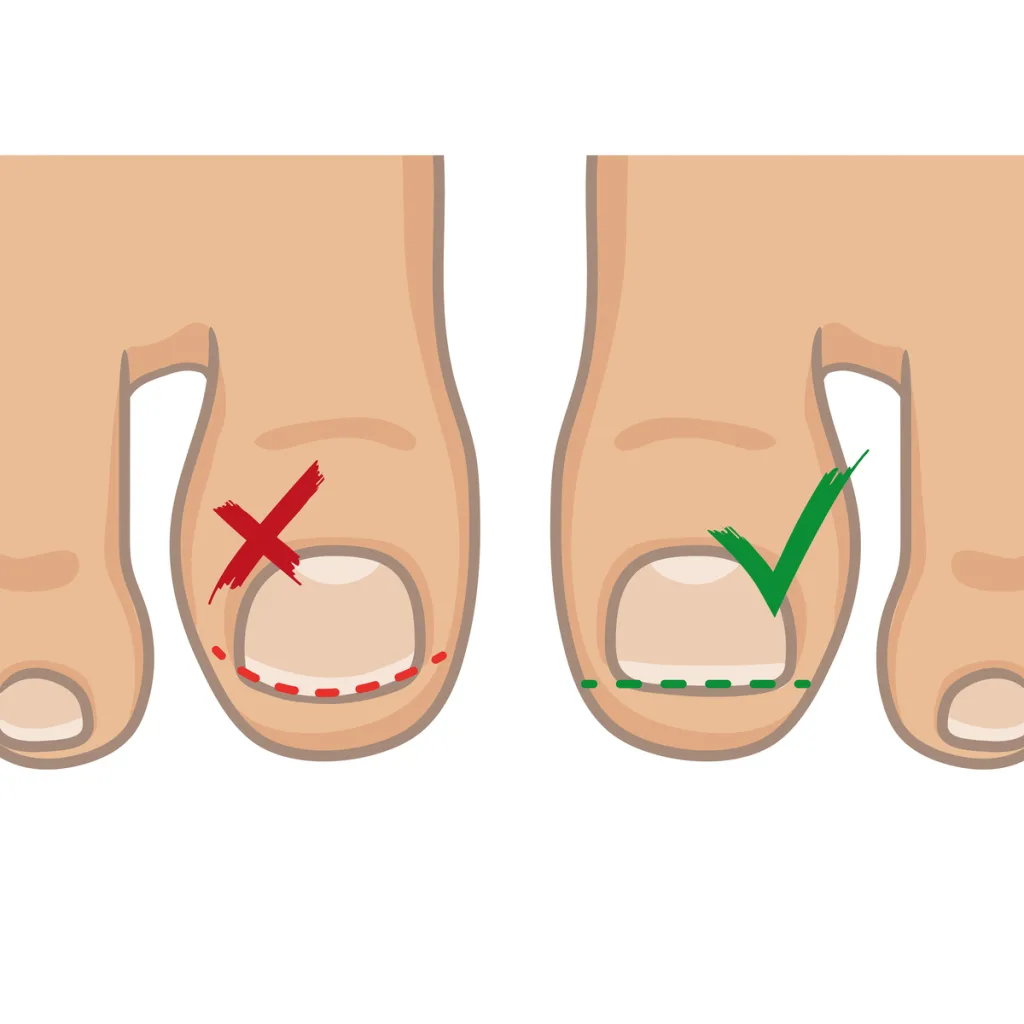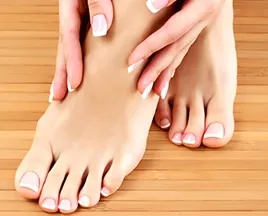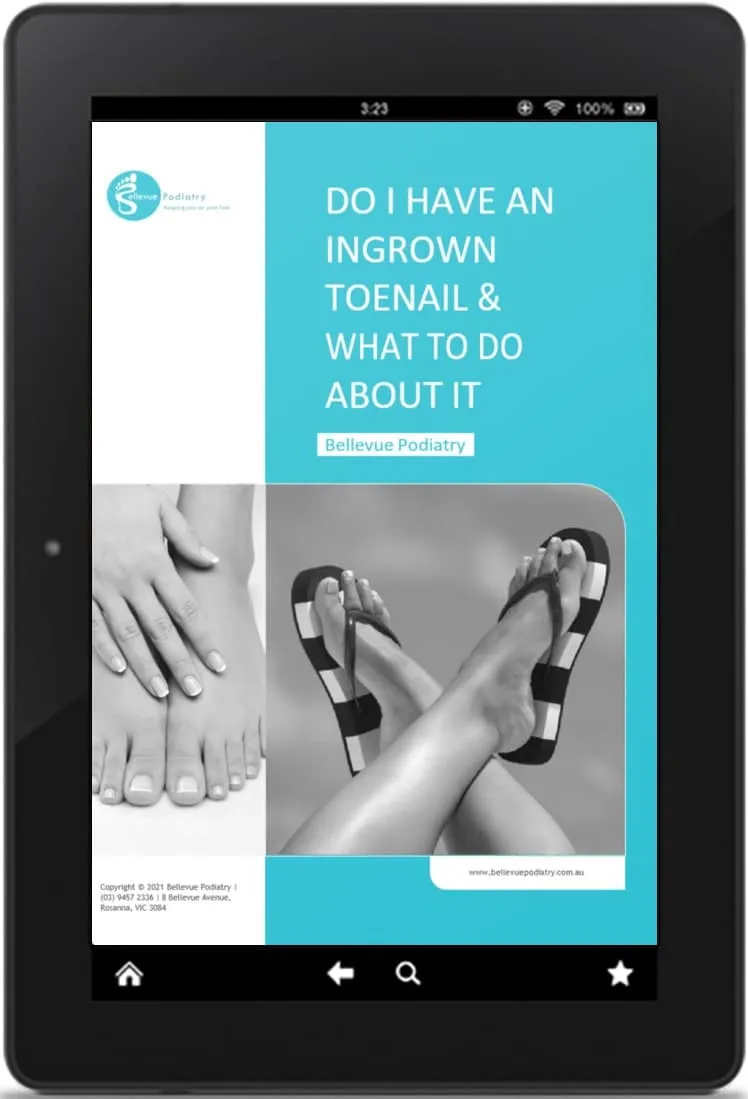Imagine your toenails as soldiers that need proper attention to stay in formation when marching. You don’t want them veering off course and causing discomfort, right? By following a few simple steps, you will significantly increase your ability to keep ingrown toenails at bay.
From trimming nails straight across to choosing the right footwear, each tip plays a critical role. Understanding how to maintain foot hygiene and avoid common pitfalls can make a world of difference. Are you ready to take the first step towards healthier feet? Let’s explore how these five tips can help you stay pain-free and comfortable.
1. Trim Nails Properly for Ingrown Toenail Prevention
To prevent ingrown toenails, always trim your toenails straight across rather than rounding the corners. This technique minimizes the risk of the nail growing into the surrounding skin, which can lead to a sore toenail or a sore big toe on the side. Use proper toenail clippers to achieve a straight cut, avoiding the temptation to cut at an angle or too short. Keeping your toenails at a moderate length is essential in preventing them from embedding into the skin.
Regular inspection and maintenance are key to prevent ingrown toenails. Pay close attention to any changes or signs of ingrown toenail symptoms, such as redness, swelling, or pain, especially around the edges of your toenails. If you notice these symptoms, take immediate action to address the issue before it worsens.
In cases where you already have an ingrown toenail, understanding how to get rid of an ingrown toenail safely is important. Soak your foot in warm water several times a day to reduce swelling and soften the skin, which can help in easing the soreness. If the condition persists or worsens, seek medical advice from an experienced ingrown toenail podiatrist like the team at Bellevue Podiatry to prevent further complications.

2. Wear Proper Footwear to Protect Your Toenails
Wearing appropriate footwear plays a crucial role in preventing ingrown toenails by ensuring your toes have adequate space and support. Choosing shoes with a wide toe box helps to minimize pressure on your toes, reducing the risk of nails growing into the surrounding skin. Tight-fitting or narrow shoes can squeeze your toes, leading to increased friction and the possibility of ingrown toenails.
Opt for shoes made of breathable materials, such as leather or mesh, to decrease moisture and friction, which are contributing factors to ingrown toenails. Proper arch support and cushioning are essential to reduce foot strain and maintain overall foot health.
Supporting your arches effectively distributes pressure across your foot, preventing areas of high stress that could exacerbate nail issues.
Consider wearing open-toed shoes or sandals when possible, as they allow more room for your toes to move freely. This can be particularly beneficial in warm weather when feet tend to swell.
3. Maintain Foot Hygiene to Avoid Ingrown Toenails
Maintaining proper foot hygiene is another important aspect of preventing ingrown toenails by ensuring that your feet remain clean, dry, and free from infections. Start by thoroughly washing your feet daily with soap and water. This helps eliminate dirt and bacteria that can lead to infections. Make sure to dry your feet completely, especially between the toes, as moisture can foster fungal growth.
Use an antifungal gel or spray if you’re prone to athlete’s foot or other fungal infections. Proper hygiene practices can help you avoid these conditions, which can exacerbate the development of ingrown toenails.
Regularly inspecting your feet for any signs of infection or abnormalities is also crucial. Look for redness, swelling, or pus around the toenails, which could indicate an ingrown toenail or another issue requiring medical attention. If you have diabetes or poor circulation, it’s even more essential to perform these checks frequently.
Lastly, change your socks daily and choose moisture-wicking materials to keep your feet dry. Wearing clean, dry socks minimizes the risk of infections and keeps your feet in good condition, greatly reducing the likelihood of developing ingrown toenails.
4. Avoid Cutting Cuticles to Keep Ingrown Toenails Away
https://bellevuepodiatry.com.au/blog-68-how-to-get-rid-of-ingrown-toenail-once-for-all/Cutting your cuticles can exacerbate the risk of ingrown toenails by creating an entry point for the nail to penetrate the skin. Your cuticles serve as a protective barrier, safeguarding the nail bed from infections and external trauma.
When you cut them, you compromise this crucial defense, increasing the likelihood of the nail edge growing into the surrounding skin. This can lead to painful and potentially serious conditions, especially if an infection sets in.
Instead of cutting your cuticles, gently push them back using a cuticle pusher. This helps maintain the integrity of the cuticle while keeping the nail bed accessible for trimming.
Consistently moisturizing your cuticles also plays an essential role in maintaining their health. Dry or cracked cuticles are more susceptible to damage, which can further elevate the risk of ingrown toenails.
Avoiding aggressive cuticle cutting not only reduces the likelihood of ingrown toenails but also promotes overall nail health.
By following these preventive measures, you can minimize complications and maintain healthier feet.
5. Monitor Foot Health to Catch Any Ingrown Toenail Issues Early
After ensuring your cuticles remain intact, regularly inspect your feet for any signs of ingrown toenails, particularly if you have diabetes or poor blood circulation. Monitoring your foot health is vital in identifying early symptoms such as redness, swelling, or pain around the toenail. In individuals with diabetes, poor blood flow can worsen these symptoms and increase the risk of infection.
Make it a habit to examine your feet daily, paying close attention to any changes in the toenail structure or surrounding skin. Early detection allows for prompt intervention, reducing the risk of complications. If you notice any signs of an ingrown toenail, seek medical advice immediately to prevent further issues.
Wear properly fitting shoes to minimize pressure on your toes, as ill-fitting footwear can contribute to the development of ingrown toenails. Additionally, consider using protective footwear if you’re prone to toe injuries.

Ingrown Toenail Prevention Conclusion...
Preventing ingrown toenails is straightforward with these tips. Studies show that 18% of adults will experience an ingrown toenail at some point. By trimming nails properly, wearing suitable footwear, maintaining foot hygiene, avoiding cutting cuticles, and monitoring foot health, you can greatly reduce your risk.
Implement these strategies consistently to keep your feet healthy and pain-free. Remember, a little proactive care goes a long way in preventing this common foot ailment.
If you think you may have an ingrown toenail and want the right professional advice on how to treat it, we currently have a limited offer running to help you out. A GAP FREE ingrown toenail assessment consult (only $59 for those without extras private insurance).
Please feel free to book yourself in online or call our friendly Reception on (03) 8104 9270 today.
Ingrown Toenail Infection
Understand how you get ingrown toenails your self care home options and what you can do to get rid of them once and for all. You don't need to put up with the pain of an ingrown toenail any longer.


Bellevue Podiatry
Bellevue Podiatry has been serving the people of Rosanna and its surrounding suburbs for over 10 years. We have the qualifications, experience and education to effectively treat any lower limb condition or injury that requires expert podiatry care.



